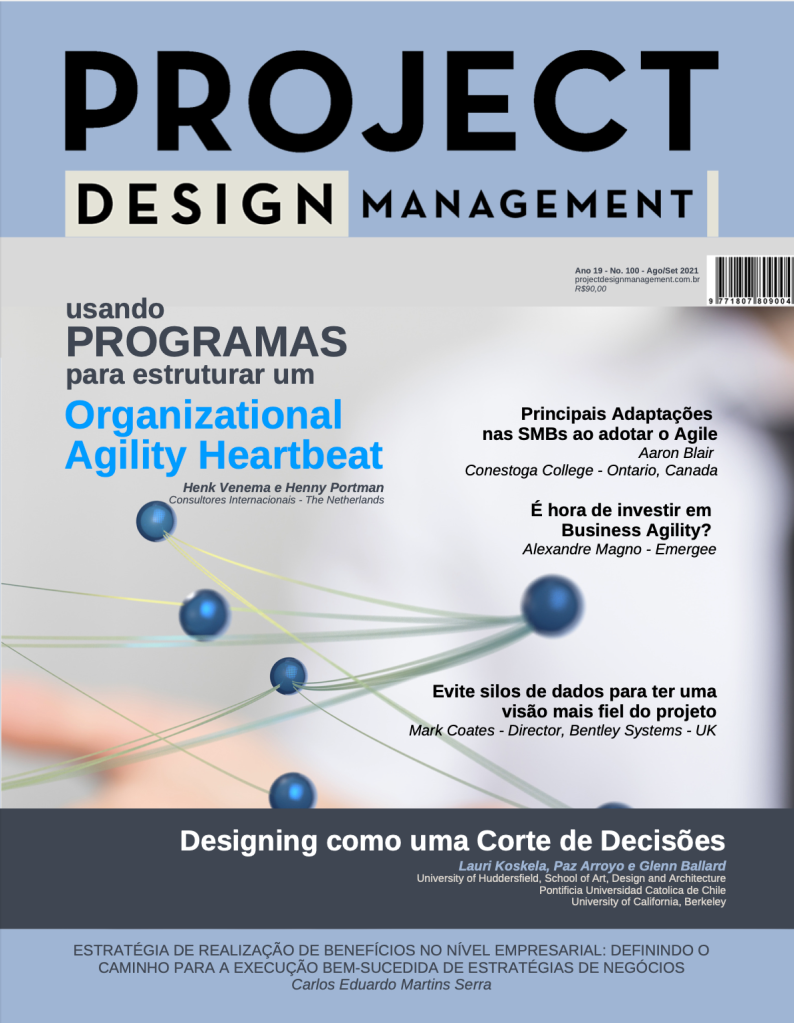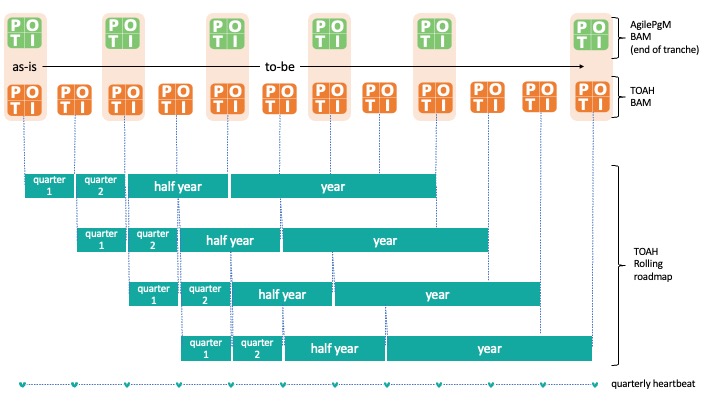I am happy to announce a new article I wrote together with Henk Venema.
Programs are sometimes seen as a relic from the past; something from the time when we weren’t talking about agile working. In small organizations, this could very well be the case. Working together toward a commonly felt goal is easier when you must coordinate it with a handful of teams. However, in large organizations, the delivery processes are often longer and more complex. Even if autonomous teams with agile ways of working are already widely used, in the larger organizations many teams will soon have to work together to approach the common goal. And this is often so complex that even in such agile working organizations there is added value in working through a program towards the common goal. So even though there will be less of a need for a program approach, there will always be a need to organize certain complex changes through a program. But in a way that the benefits of a program organization go hand in hand with the benefits of an agile organization with autonomous teams working in an agile way. TOAH (The Organizational Agility Heartbeat) is a framework (https://toahframework.com/) that offers clear added value in that area as well. Where organizations with many teams need TOAH to allow the organization’s strategy to emerge through the agile teams via a quarterly rhythm, this same mechanism can be applied perfectly well to programs. After all, a program is designed to bring about a strategic change, a change that matters, a change that hurts an organization when things are not going well. Think of a change due to changing laws and regulations or a change with a fundamentally different way of approaching the market. The strategy can often not yet be specified ‘in concrete’. The ‘why’ and ‘what’ questions are often clear, but the ‘how’ question is certainly not yet. And that is precisely the crux of this article. A clear need for a new strategy interpretation in a way that we still (partly perhaps) must invent as an organization.
Experimentation and iterative and incremental work are deeply rooted in the agile way of working of autonomous teams. When this is coupled with a program execution where the delivery of the ‘how’ takes place along incremental paths, this also places demand on the way the program is executed. This will not have to behave along the classical axis of ‘requirements carved in stone’ but as a mechanism that periodically asks itself whether the way in which the change is designed ultimately also realizes the strategy. Or perhaps even make the original strategy change because of advancing insight. A wonderful symbiosis between program coordination and agile execution with a crucial role for TOAH.
This article will explain this through several aspects.
- What is the essence of TOAH?
- What are programs and what added value does a program approach provide?
- How does TOAH connect program coordination with agile execution in the teams?
- How can you use Obeya to make program governance work optimally with agile teams?
- TOAH in collaboration with existing (program) approaches
- AgilePgM
- MSP
- SAFe
The article leads to the following conclusion:
- Even in agile organizations with agile teams, programs continue to have added value, provided that:
- The program execution leaves the HOW to the agile teams
- Program execution intertwines with scaled agile processes.
- TOAH is the link between programs and agile teams
- Both methodological (TOAH and agile program management)
- As in practical execution
- TOAH provides a pragmatic tool within existing program management methods such asAgilePgM and MSP to ensure a recognizable delivery pattern of business skills where tranches are synchronized and within tranches periodic adjustments are possible.
The article is available at:

Project Management World Journal (PMWJ): Venema, H. and Portman, H. (2021). TOAH and Programs, PM World Journal, Vol. X, Issue VIII, August.

Project Design Management: TOAH E PROGRAMAS:

















Pingback: TOAH E PROGRAMAS | Henny Portman's Blog
Pingback: Overview of my year 2021 book reviews | Henny Portman's Blog